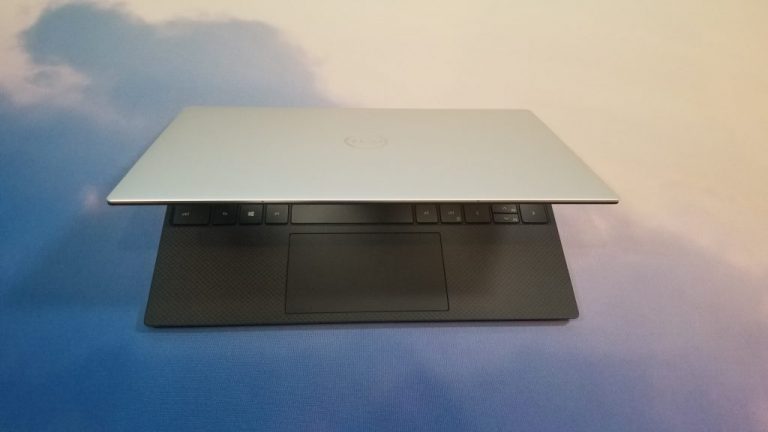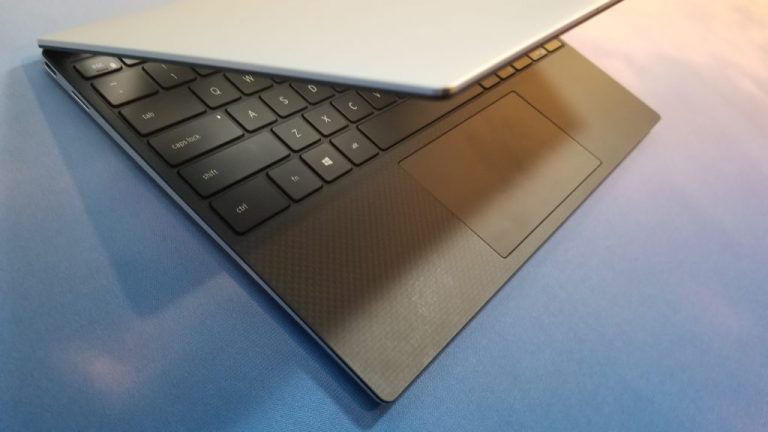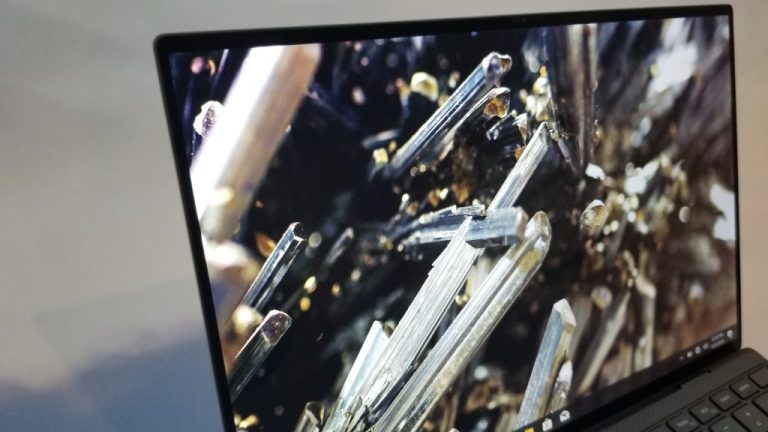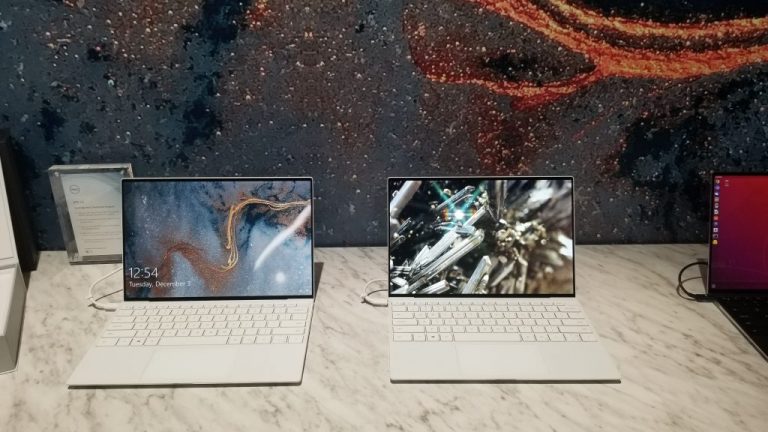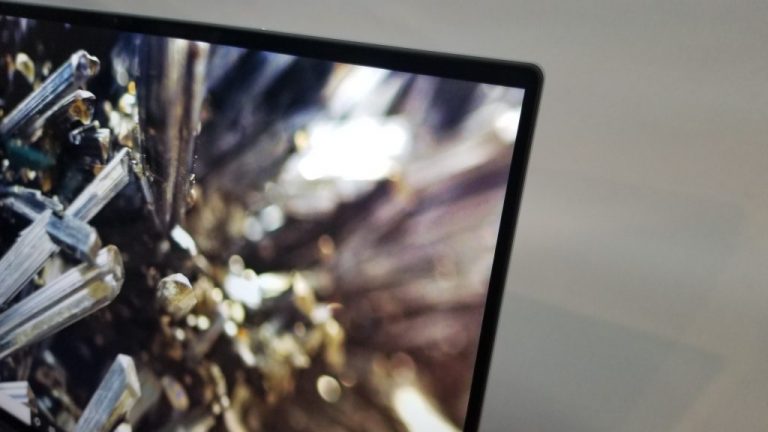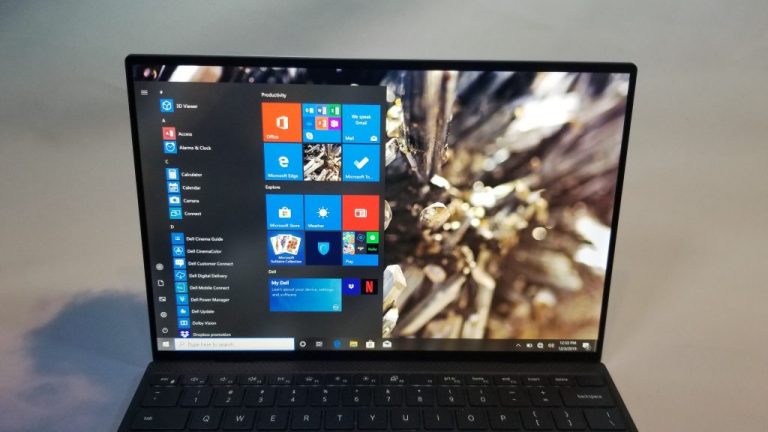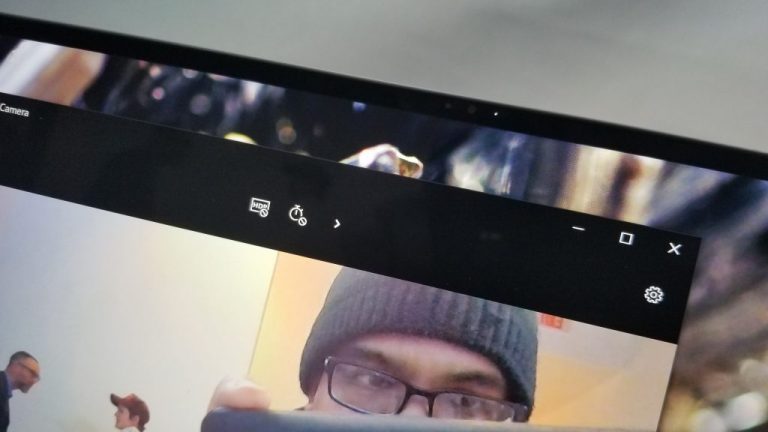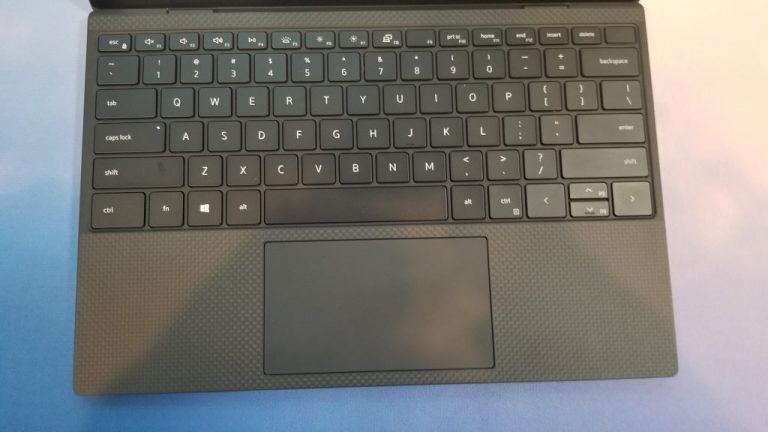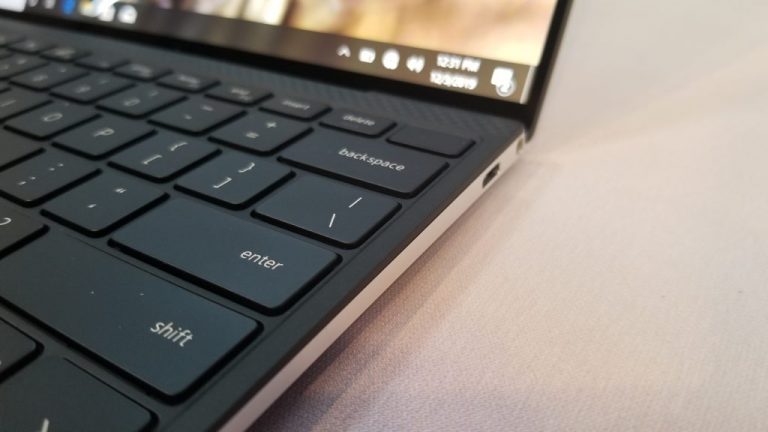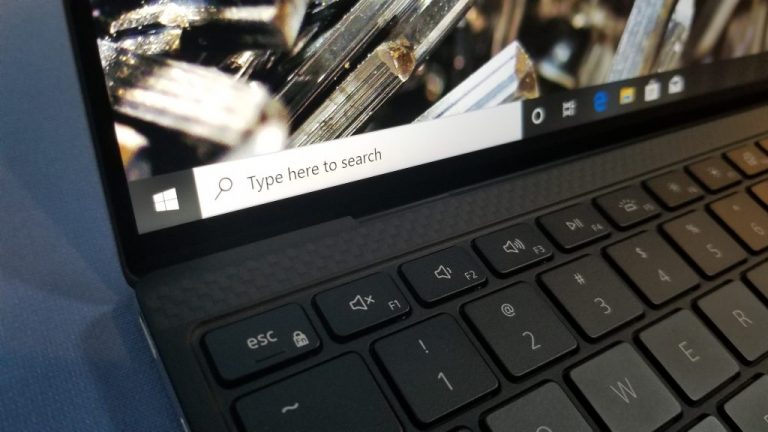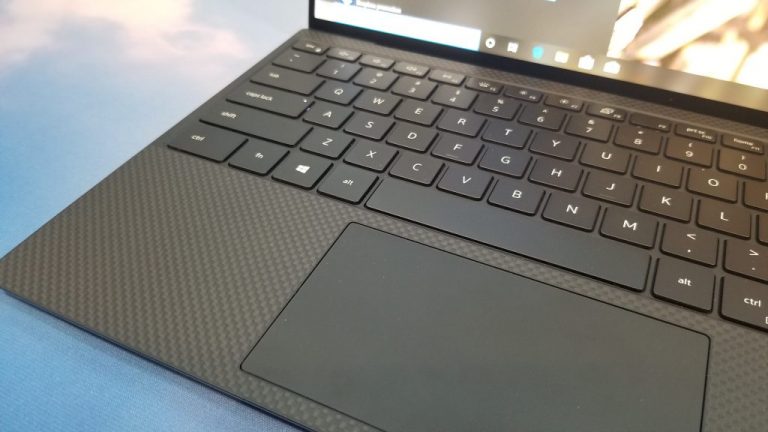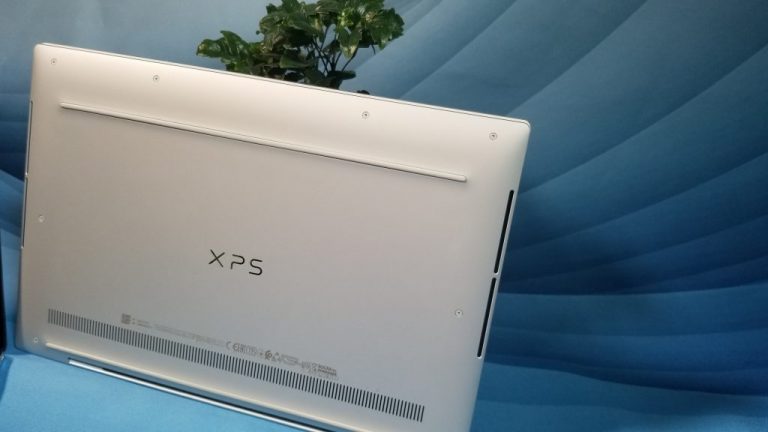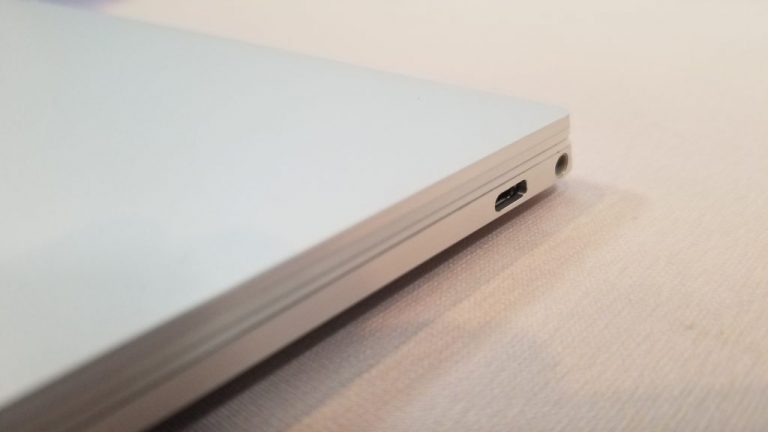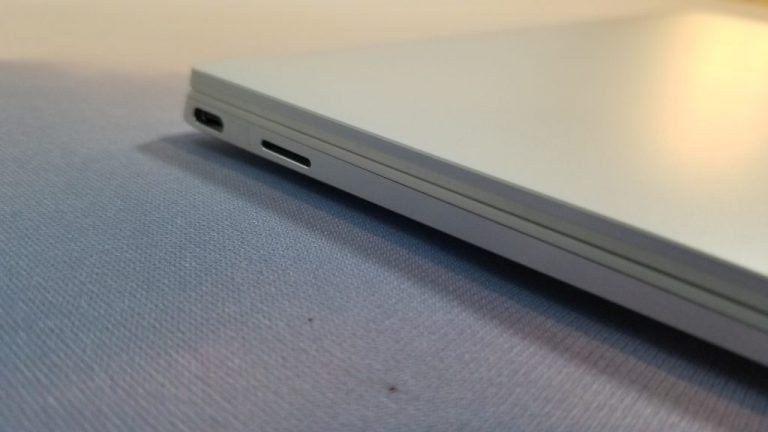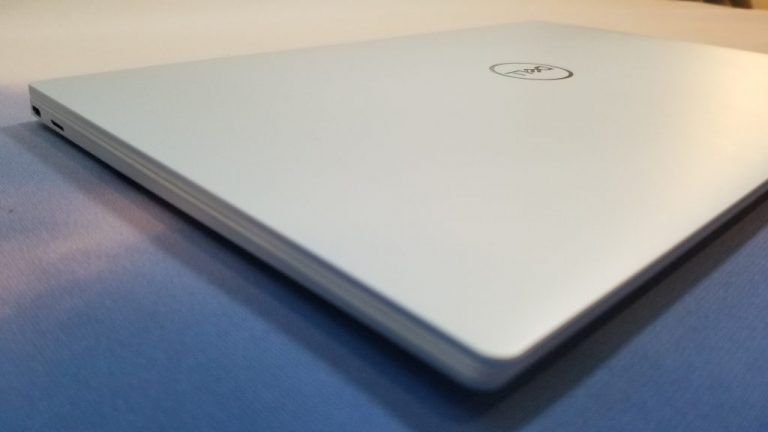Dell has always kept its XPS laptops, and the XPS 13 in particular, ahead of the competition. That’s thanks to innovative and cutting-edge features, great build quality, and an awesome thin and light, but premium design.
But this doesn’t mean Dell has to stop innovating. The company is back in 2020 with a new version of the XPS 13, featuring a near bezel-less four-sided Infinity Edge Display, a redesigned keyboard, as well as the new Intel Ice Lake chipset under the hood. We went hands-on with it ahead of CES 2020 and came away very impressed.
The perfect laptop build quality, but slightly refined
As we were first given a tour of the XPS 13, we were reminded of what makes it so perfect to begin with. Dell pointed out to us the XPS 13 is built out of a block of aluminum in two pieces, to make it as durable as ever. The enclosure is also CNC designed, and Corning Gorilla Glass 6 is bonded to the screen to make it tough and durable. Simply put, this all means there’s no bending in the chassis. That actually is something we even tried to do to the laptop when we were handed it, but happily failed at.
Elsewhere with design, Dell is still sporting a chic-woven carbon fiber and glass fiber interior, topped with titanium oxide sheen on top. It’s something that’s not changed from the last generation but this allows for maximum strength, and minimum weight, plus heat resistance. In our time with our demo unit, the laptop stayed cool to the touch, no matter what we were running on it. As always, this also makes the XPS 13 beautiful to look at and also hold in the hand. It’s simply a laptop that just stands out.
Supporting this design and the body of the XPS 13 is a twin-coil fit hinge. It is designed to help maximize the screen to body ratio and support the new four-sided Infinity Edge display. The hinge also allows for one-handed opening, which we really appreciated, especially because there is no notch in the front chassis, like most laptops.
However, while keeping the same design materials, Dell has managed to slim down the XPS 13 considerably. It’s now roughly 6 percent thinner and 2 percent smaller than the last generation. The weight is the same at around 2.64 pounds. As we discuss next, that all is mainly due to a new display, which has almost no bezels.
A screen with almost no bezels
Last year’s XPS 13 was hard to beat. It featured slim bezels on the top, right and left sides of the screen, which is something that many other device makers (like Microsoft with the Surface Pro X) later imitated. But Dell is one-upping itself with the new XPS 13 with a “4-sided InfinityEdge display.”
This new 13.4-inch “4-sided InfinityEdge display” is one of the most striking things about the XPS 13. At first glance, we noticed that the ugly bottom bezel from last year’s model is now almost entirely gone. Dell says it shrunk the bottom bezel size down from 19.5 mm to just 4.6mm.
The device itself also has a 91.5% screen-to-body ratio accordingly, a 7.8% improvement over the last year’s model. This means that the new display panel is also even larger than before. Now at 13.4 inches, it’s a mere .1 inch bigger over the last generation.
A small difference as it is, that size is actually a good thing. This screen is now being squeezed into the size of an 11-inch laptop, so the device is compact and keeps a tiny footprint. It also now sports a new 16:10 aspect ratio. And, in terms of resolution, it comes in both 1,920 x 1,200 FHD+ resolution or a 3,840 x 2,400 4K Ultra HD+ option.
This terminology might seem strange, but Dell is now calling its XPS 13 display panels HD+ or FHD+ due to the new aspect ratio.
Touch is still optional, and it isn’t a standard feature, as it is on the Microsoft Surface lineup. However, the optional 4K Ultra HD+3,200 x 2,400 resolution display boasts 90% of the DCI P3 color gamut and 1500:1 contrast ratio for more accurate colors. Dell also tells us the screens have a 0.65% anti-reflective coating and 178-degree viewing angles, with a brightness of 500 nits.
Anyway, in our brief web browsing and session watching YouTube videos, this made it seem like the slim bezels on the XPS 13 wasn’t even there. The 16:10 aspect ratio also meant that the screen was immersive and great for multi-tasking, and stacking windows side by side. We were able to get a complete view of webpages when web browsing.
It’s also worth noting that Dell has managed to bring back the Windows Hello IR webcam on this year’s XPS 13 model. It’s still at the top of the screen, just as last year, but you’ll now be able to log in to the laptop more by just looking at the screen, without worrying about using your finger, or a password.
An edge-to-edge keyboard that’s worth typing on
Thanks to this streamlined and slimmer design, Dell has tweaked the keyboard on the XPS 13 accordingly. Similar to the XPS 13 2-in-1, it now is edge-to-edge, and its keycaps are 9% larger. Dell even moved the power button to be part of the keyboard on the top-right edge and embedded a fingerprint sensor inside.
When we tried out the keyboard, we were quite impressed. It was very responsive, with generous 1.0 mm key travel, and felt similar to a Surface Laptop. We were easily able to jam our way through a typing test with minimal mistakes. We were even able to touch type and complete sentences with minimal typos.
Also of note in this area is the trackpad. Similar to what Microsoft did with the Surface Laptop, the trackpad is now 19% larger. It’s smooth and very responsive for navigating Windows 10. Clicks are very responsive and provide good feedback.
Intel Ice Lake Inside
A laptop is nothing without power under the hood, and Dell gets that. The new XPS 13 sports Intel’s latest 10th generation 10nm Ice Lake Processors. Options range from the budget-friendly Intel Core i3-1005G1, the mid-range Intel Quad Core i5-1035G1, or the top-end quad-core i7-1065G7. Storage ranges from 256GB to 2TB, and RAM is from 4GB to 32GB.
These new Intel processors have been found on other laptops before, like the Surface Laptop 3 of the Surface Pro 7. It offers up significant graphical improvements, especially in the Core i7 model. Accordingly, Dell tweaked the internals of the XPS 13 a bit for this chipset. The device uses Intel’s Dynamic Tuning Engine, so it is able to change the power of its CPU to optimize for a specific workload. It also has an advanced thermal design, with dual fans and dual heap pipes to ensure the best system performance. Hidden exhaust fans in the hinge also help improve airflow with lifting heat out.
Though more testing is needed, battery life is said to be improved on the XPS 13, with 19 hours on the FHD model. We tested out the performance by browsing the web in Edge and opening up a few of the default apps, and the laptop handled it just fine. The percentage in battery meter also remained consistent with 30 minutes of use and didn’t drop more than 3%.
Minor tweaks in ports, and connectivity
Finally, there’s the need to address connectivity. Dell’s new XPS 13 sports two Thunderbolt 3 USB-C ports, which can allow you to charge the laptop, connect an external GPU, or get fast data transfers of up to 40GBps. There’s also a MicroSD card slot, as well as a headphone jack.
This is a bit of a change from last year, as there was an additional 1 USB 3.1 Gen 1 Type C- port on board. However, the XPS 13 ships with a USB-A to USB-C adapter in the box, to help expand out connectivity.
WiFi has also changed, as the new XPS 13 sports support for WiFi 6 and the Killer AX1650 WiFI card. It’s nearly as 3 times as fast as the previous generation 80Mhz 2×2 AC WiFi card, which means you’ll be getting connections and online experiences without lag.
A laptop that’s worth buying
At the end of the day, this new Dell XPS 13 is a serious laptop that’s worth getting. Its super immersive display, as well as the comfortable keyboard, are unmatched. The Intel Ice Lake processors are also a huge plus and will make the laptop last the test of time.
The XPS 13 will be coming on January 7th in the US for prices starting at $1,000. It might even be worth buying over the Surface Laptop 3, which sports a display with much thicker bezels.

